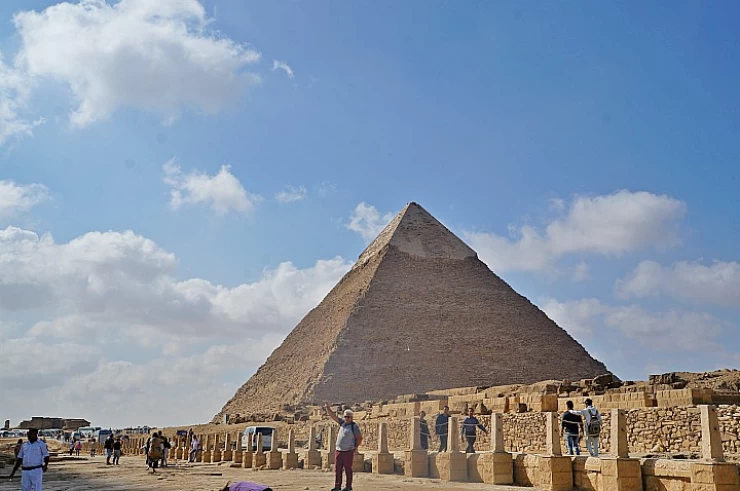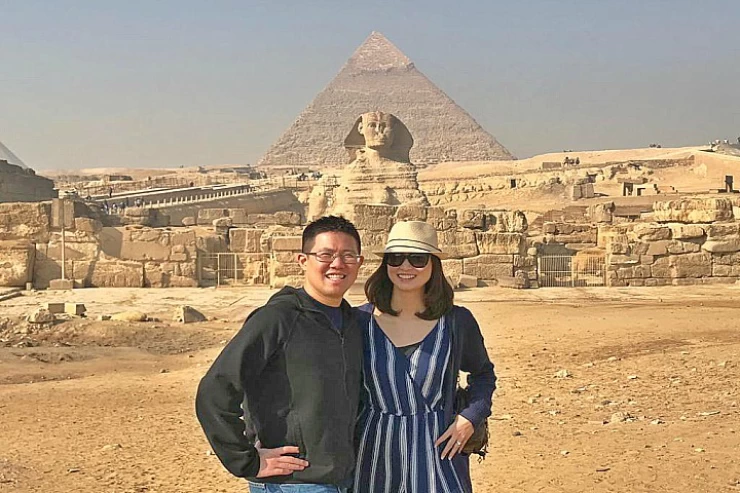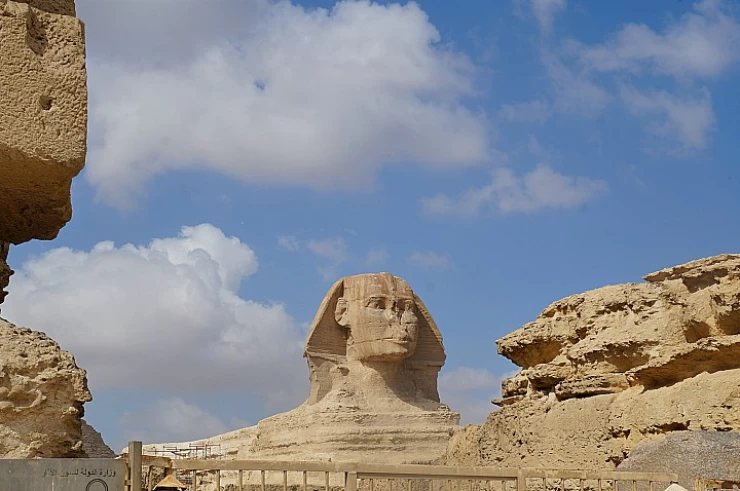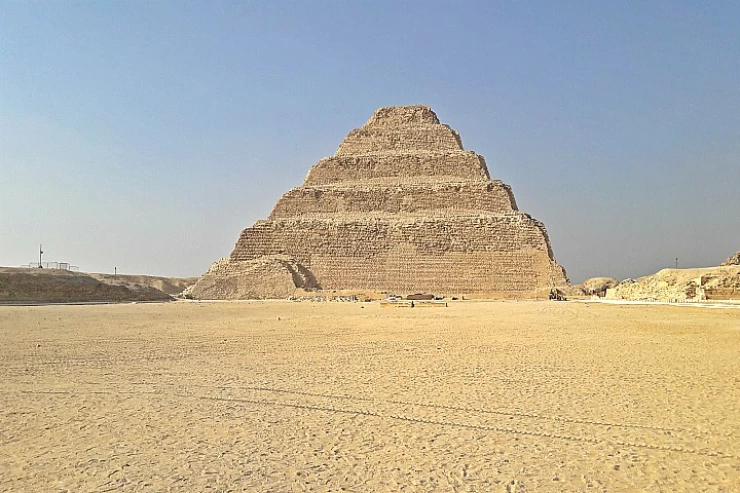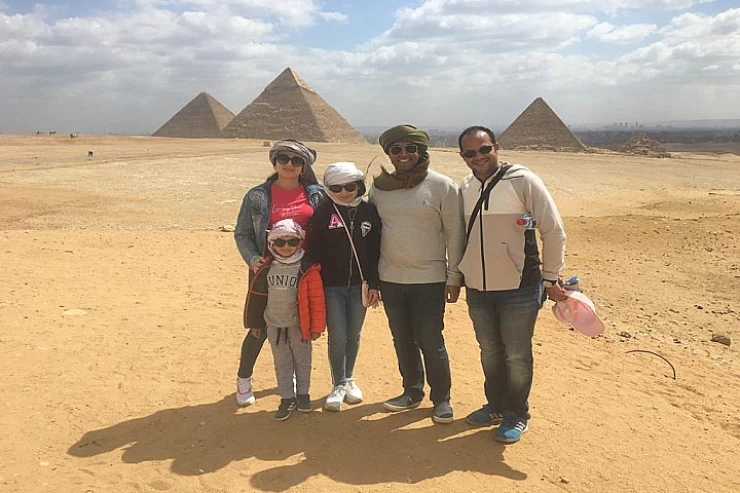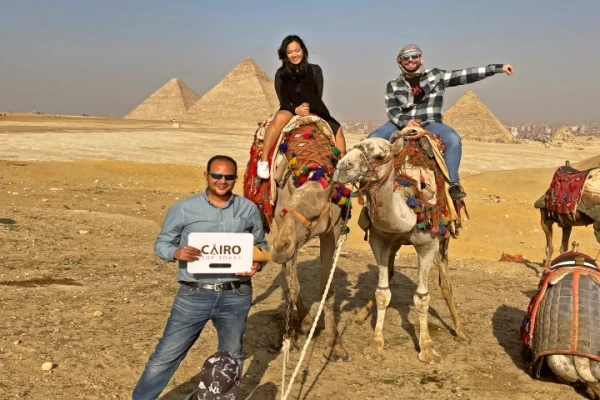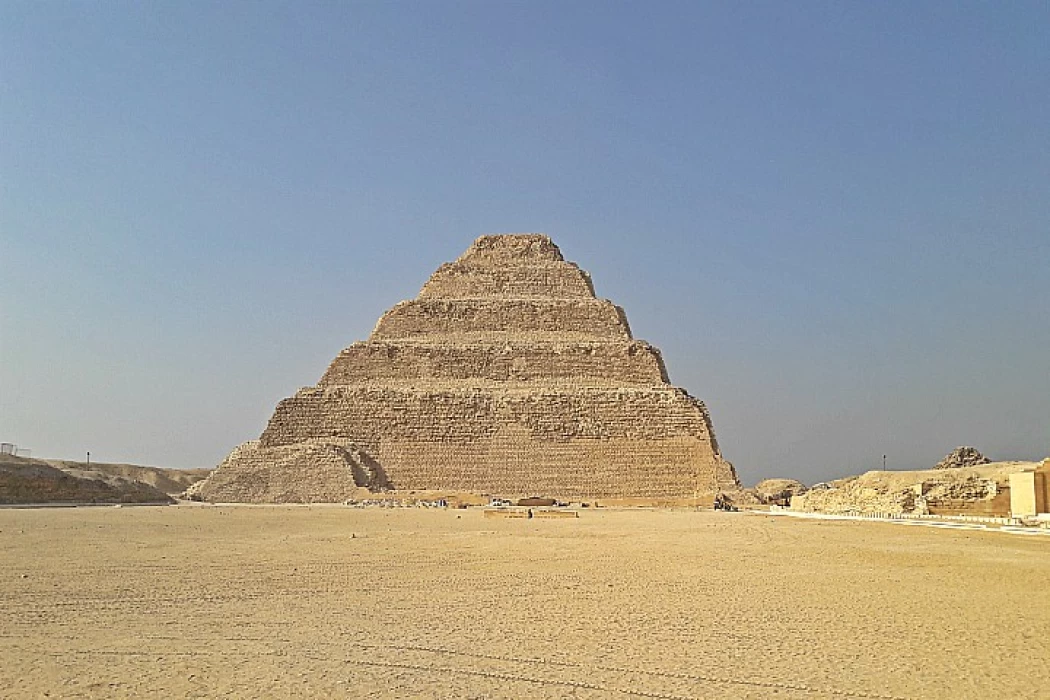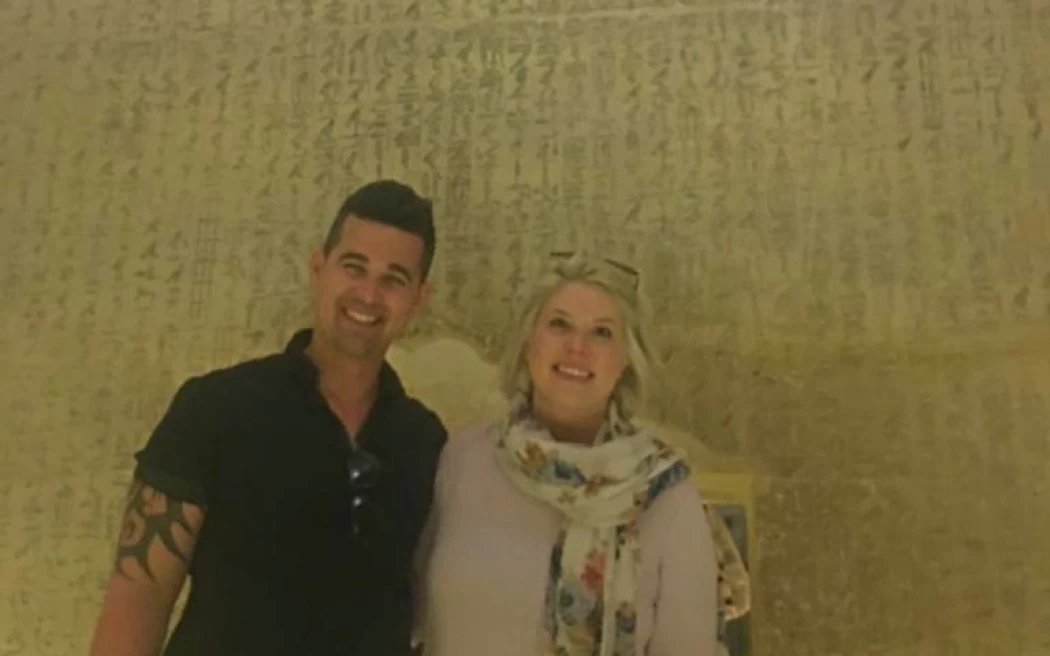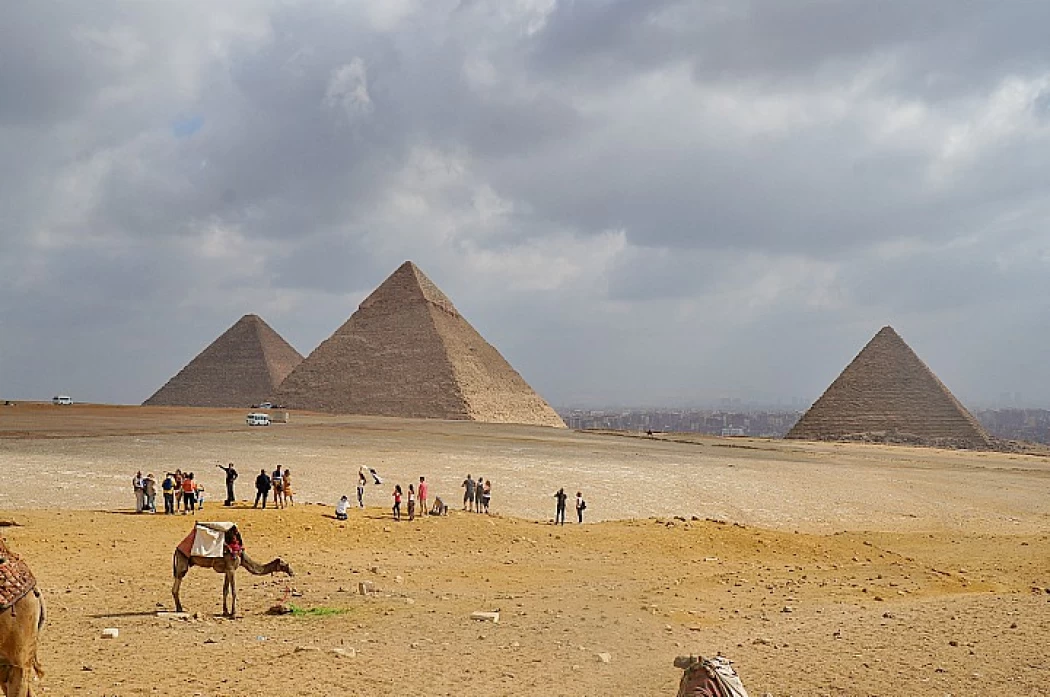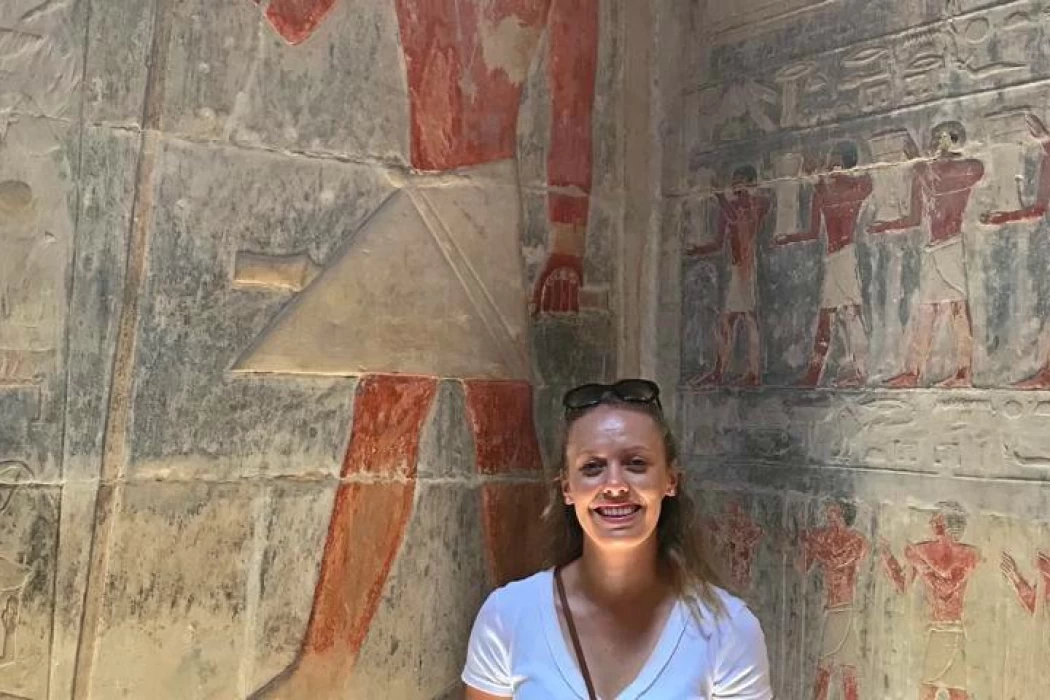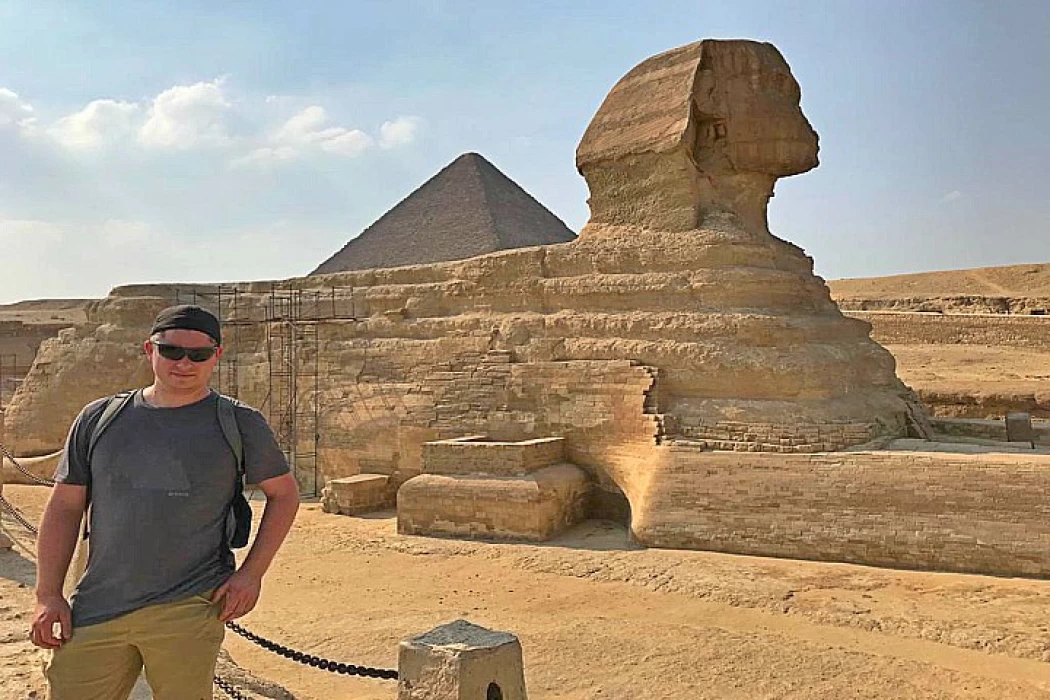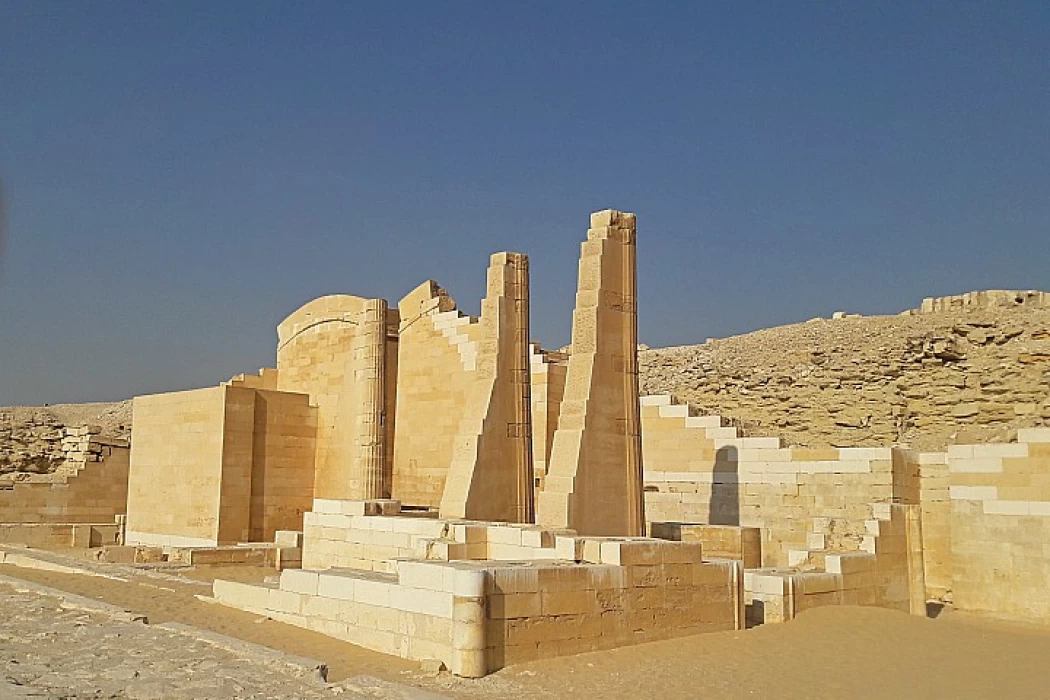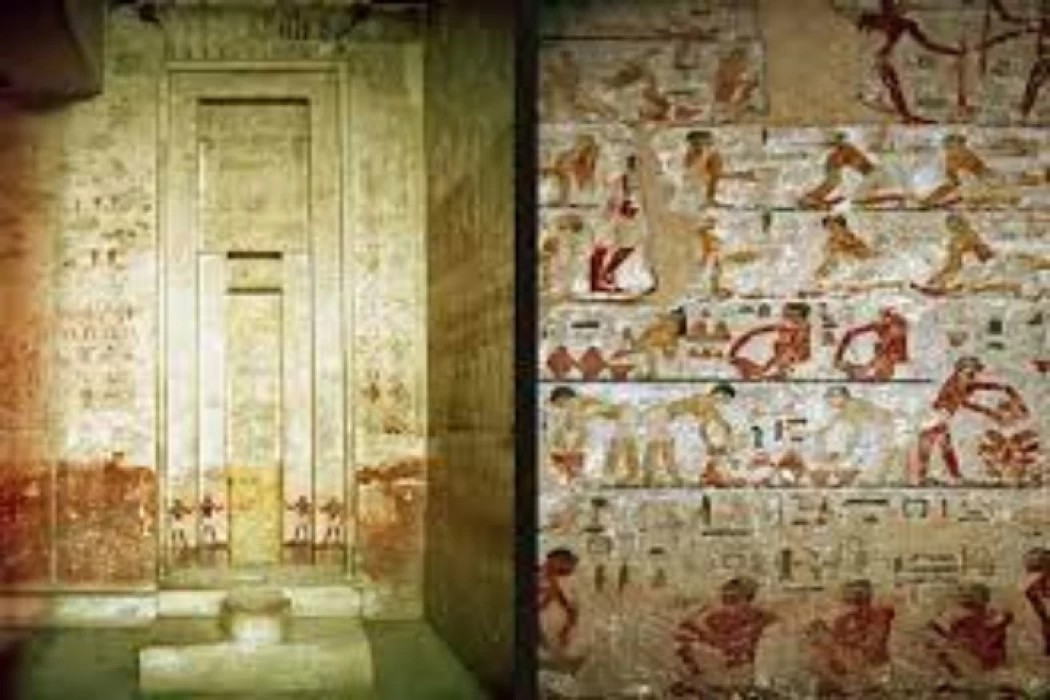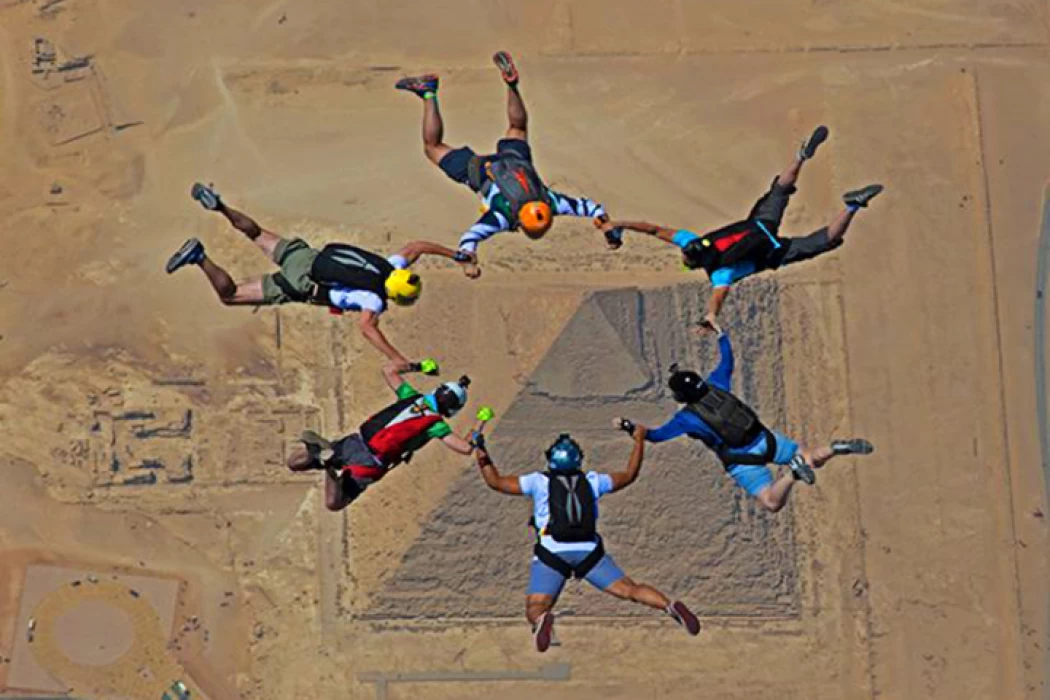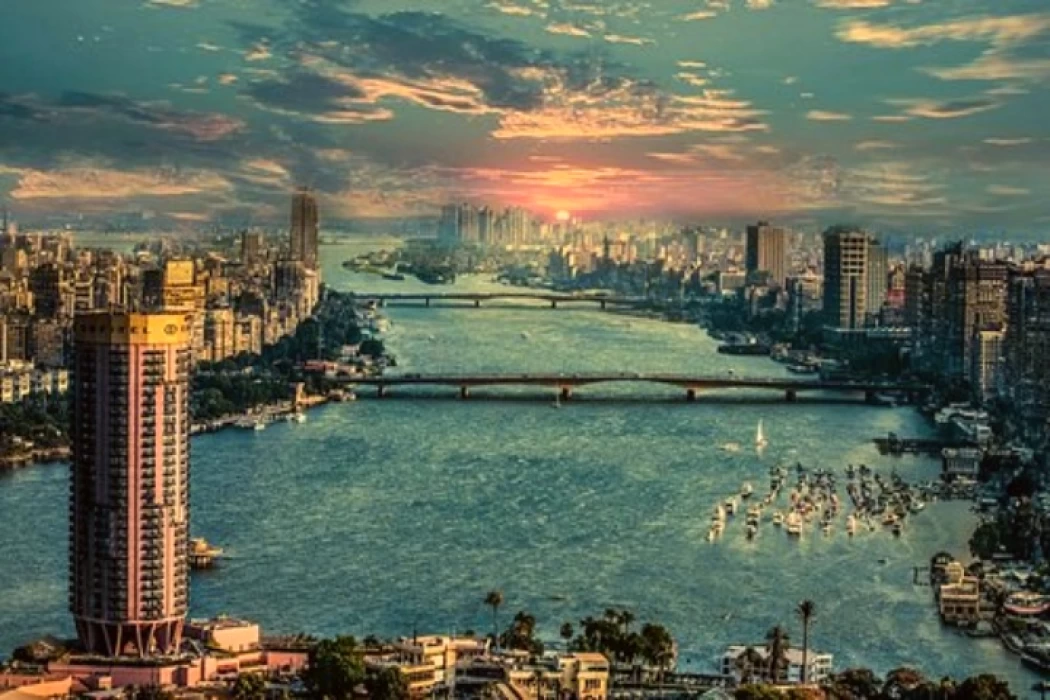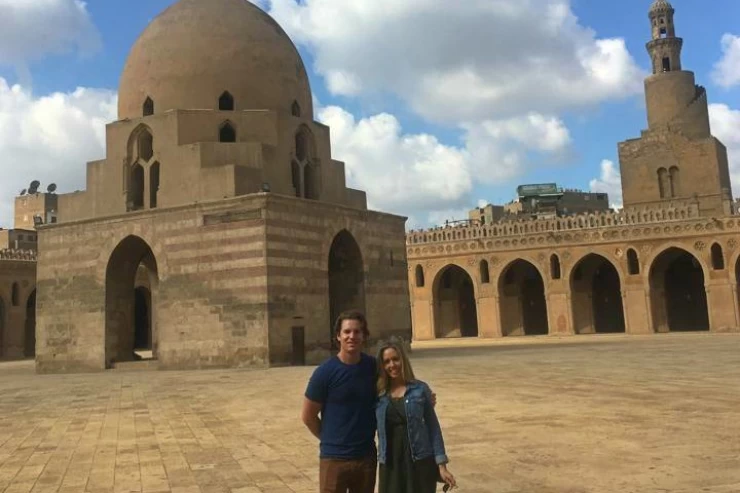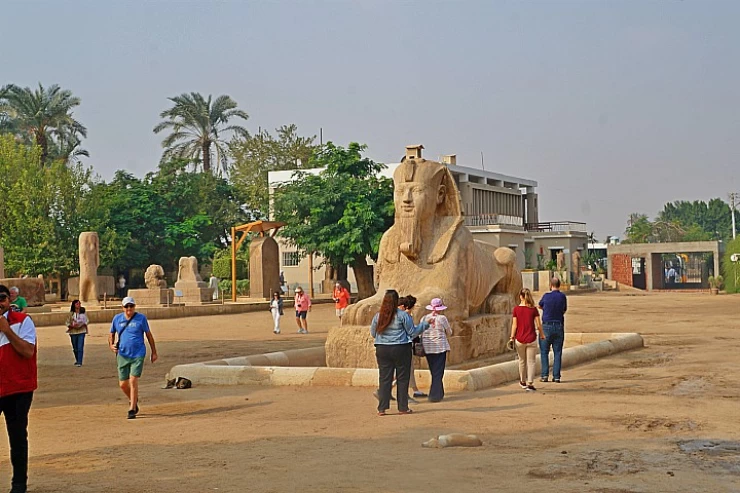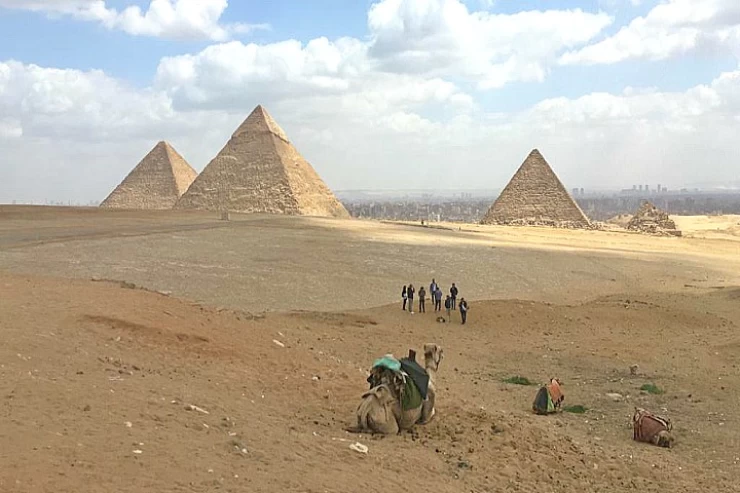开罗出发,吉萨金字塔和萨卡拉墓地一日游
Overview
开罗出发,吉萨金字塔和萨卡拉墓地一日游
您可以充分利用您的假期,选择我们精心策划的吉萨金字塔之旅,从开罗出发,前往萨卡拉墓地,体验宏伟的古埃及历史。参观吉萨金字塔和狮身人面像,这三座陵墓位于吉萨金字塔之上。吉萨城是一座真正的墓地城市,拥有陵墓、寺庙、道路和人行道。
参与者将有机会探索历史悠久的金字塔,并了解它在萨卡拉墓地中在古埃及历史中扮演的角色。我们为您提供萨卡拉的众多精彩活动,萨卡拉是古埃及第三王朝时期著名的陵墓,也是埃及文明史上最古老的金字塔,吸引了众多游客前来参观。此外,您还将发现埃及第五王朝第九位也是最后一位国王乌纳斯的金字塔——乌纳斯金字塔。这座历史遗迹位于开罗附近,拥有众多可追溯至古埃及王国时期的陵墓、寺庙和纪念碑。
伊杜特墓(Idu)以其色彩斑斓的场景而闻名,描绘了埃及的日常生活,包括捕鱼、抄写员、公主雕像、农业活动、纸莎草收割、牲畜和屠夫。
萨卡拉的泰提金字塔,是继法老乌纳斯之后统治埃及的第六王朝的创始人,其建筑风格也沿袭了乌纳斯的风格:其中央的砖石结构由紧密堆积的石块砌筑而成,并包裹着优质的石灰岩。此外,还有众多国王的雕像。
查看我们最热门的埃及一日游。
开罗出发,吉萨金字塔和萨卡拉墓地一日游
您可以充分利用您的假期,选择我们精心策划的吉萨金字塔之旅,从开罗出发,前往萨卡拉墓地,体验宏伟的古埃及历史。参观吉萨金字塔和狮身人面像,这三座陵墓位于吉萨金字塔之上。吉萨城是一座真正的墓地城市,拥有陵墓、寺庙、道路和人行道。
参与者将有机会探索历史悠久的金字塔,并了解它在萨卡拉墓地中在古埃及历史中扮演的角色。我们为您提供萨卡拉的众多精彩活动,萨卡拉是古埃及第三王朝时期著名的陵墓,也是埃及文明史上最古老的金字塔,吸引了众多游客前来参观。此外,您还将发现埃及第五王朝第九位也是最后一位国王乌纳斯的金字塔——乌纳斯金字塔。这座历史遗迹位于开罗附近,拥有众多可追溯至古埃及王国时期的陵墓、寺庙和纪念碑。
伊杜特墓(Idu)以其色彩斑斓的场景而闻名,描绘了埃及的日常生活,包括捕鱼、抄写员、公主雕像、农业活动、纸莎草收割、牲畜和屠夫。
萨卡拉的泰提金字塔,是继法老乌纳斯之后统治埃及的第六王朝的创始人,其建筑风格也沿袭了乌纳斯的风格:其中央的砖石结构由紧密堆积的石块砌筑而成,并包裹着优质的石灰岩。此外,还有众多国王的雕像。
查看我们最热门的埃及一日游。
Inclusion
我们的代表将为您提供往返开罗或吉萨酒店的交通服务。
交通将由空调车辆提供。
吉萨金字塔和萨卡拉一日游的门票和入场费已包含在内。
午餐将在当地一家高品质餐厅享用。
开罗之旅期间,将有一位会说英语的埃及古物学家导游陪同您。
所有开罗一日游均提供瓶装水。
开罗或吉萨购物游(根据要求提供)。
价格包含税费和服务费。
Exclusion
埃及一日游行程中未指定的任何额外项目。
从内部进入胡夫金字塔。
骑骆驼。
小费。
用餐期间的饮料。
此价格适用于埃及圣诞节和新年之旅或埃及复活节之旅。
Itinerary
开罗顶级旅游导游将从开罗或吉萨的任何地方接您,开始您的埃及冒险之旅,参观吉萨金字塔和著名的萨卡拉墓地,您将首先被转移到吉萨墓地,这个墓地非常有名,它的一个坟墓,胡夫金字塔,一直被认为是古代世界七大奇迹之一,第二座金字塔属于卡夫拉国王,我们推测他是狮身人面像的创始人,狮身人面像是一个人头巨大的狮子雕像,守护墓地超过 4500 年,在狮身人面像前,您将进入卡夫拉国王的谷神庙,他的皇室遗体在那里被制成木乃伊,然后举行埋葬仪式,最后但并非最不重要的是,卡夫拉之子迈塞里努斯的第三座金字塔,旁边有小金字塔,国王的王后和孩子们都埋葬在那里。
游览完吉萨金字塔后,您将前往萨卡拉墓地,这是法老左塞尔最大、最著名的阶梯金字塔。它高耸于墓地之上,从各个角度都可以看到。这座金字塔是由古王国伊姆霍特普的杰出建筑师在公元前 2650 年左右建造的。根据传说,他发明了通过建造马斯塔巴来改变古典埃及陵墓的形状,使其不再是矩形。事实上,他下令将一个马斯塔巴放置在另一个马斯塔巴之上。
在开罗旅行期间,我们将在当地餐厅享用午餐,然后在享受开罗一日游后送您返回酒店。
Price
| Number of Persons | Prices |
|---|---|
| 1 Person | $135 Per Person |
| 2 - 3 Persons | $110 Per Person |
| 4 - 6 Persons | $85 Per Person |
| 7 - 10 Persons | $75 Per Person |
Start from : 75
Check Availability
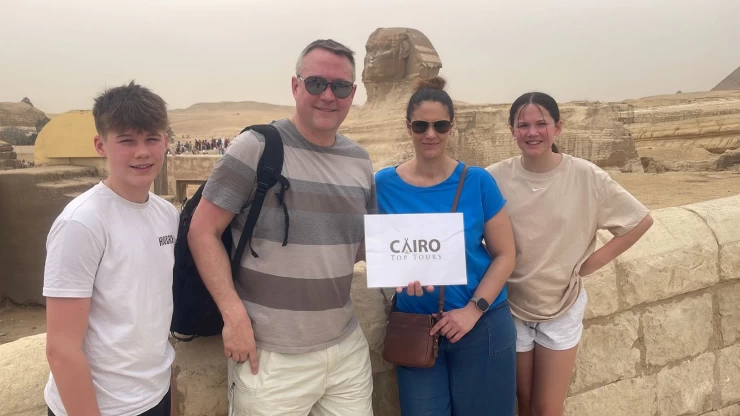
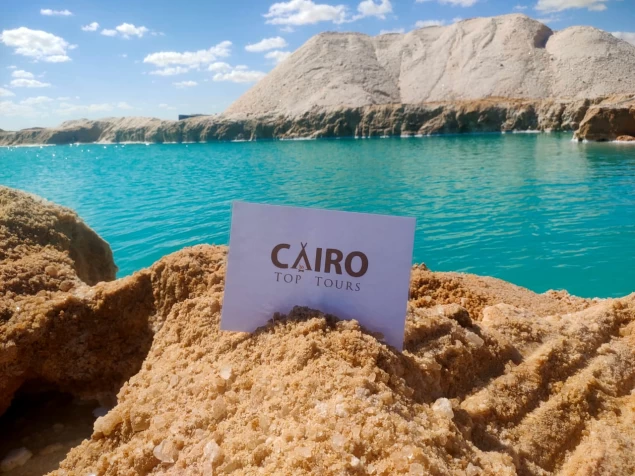
You Also May Like
Looking for something different? check out our related tour now, or simply contact us to tailor made your Egypt tour
吉萨金字塔与埃及博物馆开罗之旅
如果你想访问埃及,开罗是你理想的探索目的地。通过你参观埃及博物馆和吉萨金字塔,可以看到古埃及人在建筑艺术方面的神奇技艺。
埃及博物馆、科普特古城和伊斯兰开罗之旅
探索伊斯兰开罗宏伟的清真寺,感受开罗老城的历史魅力。深入了解科普特开罗的丰富遗产,这里有著名的地标性建筑和教堂,圣家族曾在此栖息,并拥有独特的圣像。此外,千万不要错过参观开罗埃及博物馆(Egyptian Museum)的机会,那里的展品令人叹为观止。
开罗吉萨金字塔、萨卡拉和孟菲斯一日游
在令人叹为观止的旅程中,参观闻名遐迩的吉萨金字塔,感叹埃及法老的伟大。在开罗之旅中,您可以探索这座历史悠久的埃及首都,这里到处都是金字塔和古墓,您还可以了解它的秘密。
开罗中途停留转机之旅
哈里里汗是一个露天市场,是了解当代埃及丰富的风俗和文化的窗口。在这里,您可以结识当地的手工艺人,为独一无二的纪念品讨价还价,还可以尽情享受这里弥漫的香料和芳香。
埃及之旅和中东评论
从我们的社交媒体账户、Trip Advisor 和 YouTube 视频中可以看到,埃及一日游(Egypt Tours)获得了许多客户的积极反馈,他们非常喜欢我们的低价埃及游,因为我们的专家会陪同他们游览埃及的每一个地方,向他们展示埃及和圣地游期间参观的每个景点的历史。您可以从我们的社交媒体账户、Trip Advisor 和 YouTube 视频中看到,埃及一日游(Egypt Day Tour)获得了很多客户的积极反馈,他们都非常喜欢我们的低价埃及游,因为我们的专家会陪同他们游览埃及和圣地的每一个地方,向他们展示每个景点的历史。
The highly recommended travel experiences of exploring the iconic Giza Pyramids and delving into the historic wonders of the Saqqara Necropolis. These two incredible sites offer a glimpse into the ancient mysteries and architectural marvels that have defined Egypt's rich history and cultural heritage.
Photography policies at historical sites in Cairo can vary depending on the specific location and the rules set by the site management. However, there are some general guidelines and considerations to keep in mind when taking photographs at historical sites in Cairo:
Entrance Fees: Some historical sites charge an additional fee for photography. Make sure to inquire about any photography fees at the ticket counter when purchasing your entrance ticket.
Restrictions on Flash Photography: Flash photography is often prohibited in many indoor areas of historical sites, such as museums, temples, and tombs. Flash can be damaging to delicate artifacts and paintings. Always follow posted signs and instructions from site staff.
Tripods and Professional Equipment: The use of tripods and professional photography equipment, such as large cameras and drones, may be restricted or require special permits at some historical sites. Check in advance to avoid any issues.
Respectful Photography: Be respectful of the site and other visitors. Avoid blocking pathways or interfering with the experiences of other tourists. Don't touch or lean on ancient structures or artifacts.
Guided Tours: When taking guided tours, your guide can provide information on where photography is permitted and any specific rules that apply at each site.
Security Considerations: Some sensitive areas, including military installations and government buildings, may be off-limits to photography for security reasons. Always respect security personnel's instructions.
Commercial Photography: If you intend to use your photographs for commercial purposes, such as in a travel blog, for sale, or in publications, you may need to obtain special permits or permissions. Check with the relevant authorities.
Cultural Sensitivity: Be mindful of local customs and cultural sensitivities. On some religious sites, it may be inappropriate to take photographs. Always follow any posted guidelines and signs regarding photography.
Time Restrictions: Some historical sites may have specific hours during which photography is allowed, and it may be restricted during certain times of the day or during events.
Private Properties: If you plan to visit historical sites on private properties, such as palaces or estates, photography policies may vary, and you may need permission to take photographs.
Avoiding common travel scams requires vigilance, awareness, and some basic precautions. Scammers often target tourists because they may be unfamiliar with the local environment and customs. Here are tips to help you avoid falling victim to travel scams:
Research Your Destination: Before you travel, research your destination, including common scams reported by other travelers. Knowledge is your best defense.
Stay Alert: Be aware of your surroundings and trust your instincts. If something feels off or too good to be true, it probably is.
Protect Your Belongings: Keep your belongings secure at all times. Use anti-theft bags or wallets, and don't leave valuables unattended in public places.
Beware of Distractions: Scammers often work in pairs or groups. One person may distract you while another steals your belongings. Be wary of overly friendly strangers or sudden disturbances.
Use ATMs Wisely: Use ATMs inside banks or reputable establishments, and be cautious of card skimming devices. Cover the keypad when entering your PIN.
Check Bills and Change: Count your change and inspect bills when making purchases or receiving change to ensure they are not counterfeit or inaccurate.
Research Accommodations: Book accommodations through reputable websites or directly with hotels. Be cautious when booking through unknown or unofficial channels.
Be Skeptical of "Closed" Attractions: If someone tells you that a popular tourist attraction is closed, it might be a ploy to redirect you to a different, overpriced attraction. Verify such information independently.
Negotiate Prices in Advance: When using services like taxis, rickshaws, or street vendors, negotiate prices in advance to avoid surprises and disagreements.
Be Cautious with Guides: If you hire a local guide, make sure they are licensed and reputable. Don't be pressured into hiring a guide on the spot.
Check Official Identification: If someone claims to be a police officer or other official, ask to see their identification. In some countries, scammers impersonate law enforcement.
Ignore Unsolicited Emails and Calls: Don't respond to unsolicited emails, calls, or messages offering prizes, discounts, or lottery winnings. These are often phishing scams.
Use Caution with Wi-Fi: Be careful when using public Wi-Fi networks, as they may not be secure. Avoid accessing sensitive information or making online transactions on unsecured networks.
Purchase Travel Insurance: Travel insurance can provide protection against various travel-related risks, including trip cancellations, medical emergencies, and lost belongings.
Keep Emergency Contacts Handy: Have the contact information for your country's embassy or consulate readily available in case you need assistance while abroad.
Report Suspected Scams: If you encounter a potential scam or fraudulent activity, report it to local authorities or your embassy/consulate and share your experience with fellow travelers online.
Cairo and Giza are home to a wealth of archaeological sites that provide a window into Egypt's rich history and ancient civilization. Here are some of the most prominent archaeological sites in Cairo and Giza:
Giza:
Giza Pyramids: The Giza Plateau is home to three famous pyramids: the Great Pyramid of Khufu (Cheops), the Pyramid of Khafre (Chephren), and the Pyramid of Menkaure. These are among the most iconic and well-preserved pyramids in Egypt.
The Great Sphinx of Giza: Adjacent to the pyramids is the Great Sphinx, a colossal limestone statue with the body of a lion and the head of a pharaoh, believed to represent Pharaoh Khafre.
Pyramid Complexes: In addition to the main pyramids, each pharaoh's tomb includes various temples, causeways, and smaller pyramids for family members. These are integral parts of the archaeological sites.
Solar Boat Museum: Located near the Great Pyramid, this museum houses a reconstructed solar boat that was buried with Pharaoh Khufu to carry him to the afterlife.
Giza Plateau Sound and Light Show: While not an archaeological site in itself, the sound and light show at the Giza Plateau offers a unique experience with a narrated history of the pyramids, accompanied by spectacular lighting effects.
Cairo:
Egyptian Museum: While not an archaeological site in the traditional sense, this museum houses an extensive collection of ancient Egyptian artifacts, including mummies, statues, jewelry, and treasures from King Tutankhamun's tomb.
Saladin Citadel: The historic Citadel of Saladin is home to several well-preserved mosques, palaces, and fortifications, providing insights into the architecture and history of the Islamic period.
Mosques and Madrasas: Cairo boasts numerous historic mosques and madrasas (Islamic schools), such as the Sultan Hassan Mosque and the Al-Azhar Mosque, which showcase stunning architecture and Islamic art.
Khan el-Khalili Market: While primarily a bustling market, Khan el-Khalili's winding streets and historic buildings offer a glimpse into the city's history.
Coptic Cairo: Also known as Old Cairo, this district is home to several ancient Coptic Christian churches, including the Hanging Church and the Church of St. Sergius and Bacchus. The Coptic Museum is also located in this area.
Islamic Cairo: This area is dotted with historic mosques, madrasas, and other Islamic architectural gems, such as the Ibn Tulun Mosque and the Al-Hakim Mosque.
Old Cairo Gates: Gates like Bab Zuweila and Bab al-Futuh are well-preserved relics from the medieval period and offer architectural and historical significance.
Babylon Fortress: Located in Coptic Cairo, the Babylon Fortress is an ancient Roman fortress with remnants of churches and ancient structures.
Egypt's standard electrical voltage is 220 volts at 50 hertz. Sockets are of the European (2-prong, 2-pin plug) variety. If you are traveling from the United States, Canada, or another country where the standard voltage is 110, you will need to pack a power adaptor. You will only need to pack an international travel adaptor plug if you are coming from a country where the standard voltage is 220/240.
Visiting working archaeological sites in Egypt is generally restricted to authorized personnel, archaeologists, researchers, and professionals directly involved in excavation and preservation work. However, tourists interested in archaeology and history can engage in educational programs or tours that offer insights into Egypt's ancient sites and archaeological practices without actively participating in digs.
- Educational Tours.
- archaeological field schools.
- Museum Workshops.
- visiting archaeological sites.
- Public lectures and events
The oldest stone pyramid and a notable building in Egyptian architectural history is the Step Pyramid of Djoser.
Mastabas: Old tombs adorned with elaborate ornamentation and carvings.
The Unas Pyramid is well-known for its pyramidal writings.
Exhibiting items from the Saqqara necropolis is the Imhotep Museum.


Cairo Top Tours Partners
Check out our partners
